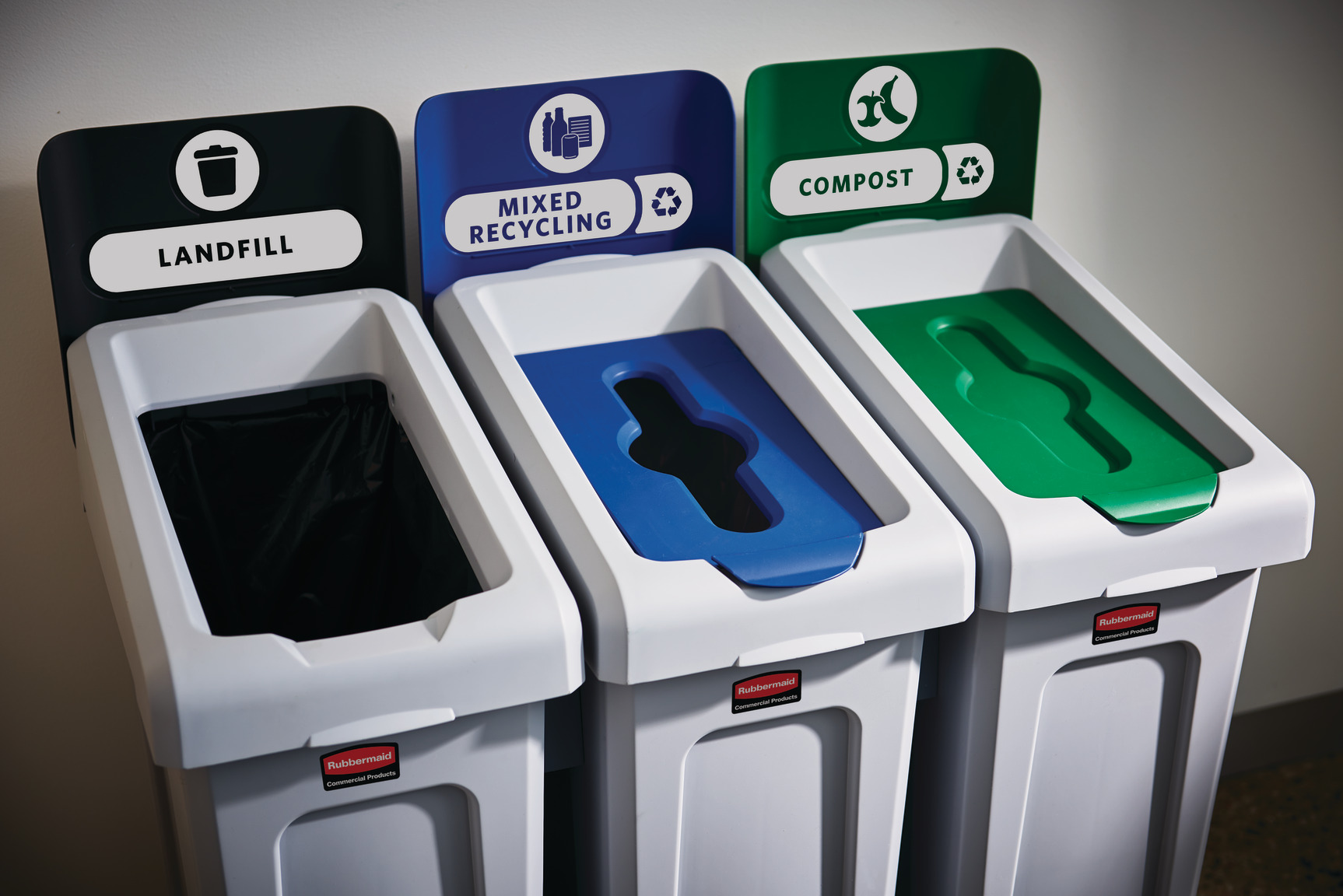
Congratulations! You’ve now received your new RCP waste and recycling containers and taken the first step towards better waste management.
The next stage is making the most out of your new bins now you’ve got them. Read on to find out how to create a culture of recycling in your venue or facility so you can maximise your recycling rate and keep your waste management costs to a minimum.
1. Putting your bins in the right place
When you ordered your bins, you probably considered where in the venue or facility they’d live. For example, a Slim Jim® Vented tucked under a counter or office desk, or a BRUTE® to handle food waste or bulky packaging waste in a busy kitchen or warehouse. But knowing exactly where the bins should go is key to ensuring your staff and customers use them properly.
The main thing to remember is that where waste is created, it must also be collected.
We recommend doing a ‘waste walk’ through your venue or facility and taking note of everywhere waste gets created, whether you already have a bin there and if you are collecting the right streams in the right places. If you spot recyclable waste in your general waste bin but don’t have that recycling bin nearby, you might need to shuffle things around. High traffic areas (eg. bars, hotel receptions / processing and packaging areas) will be your top priorities.
Being aware of recycling legislation requirements, you’ll also need to consider the type of waste being produced. A food waste bin makes sense in a kitchen, but have you considered other areas food waste is being generated such as in employee break rooms?
2. Clear labelling and signage
Clear labelling minimises the risk of cross-contamination in your waste system. This happens when non-recyclable materials go in recycling streams, recyclables are put in the wrong stream (e.g. a glass bottle in a paper bin) or recyclables aren’t cleaned properly before they’re thrown away.
Reducing cross-contamination is key to getting your recycling rate as high as possible. And in the long run, more recycling means lower waste management costs and supports a more sustainable operation overall.
Make it clear what goes where by using colour coding, easy-to-read signage, and descriptive icons that illustrate the waste stream.
Get started with this editable poster template you can tweak to show exactly what type of waste should go in each of your recycling bins. Or personalise the labels even further by using our label customisation tool, which can add your business’ logo alongside tailored waste stream icons.
3. Building a culture of recycling
Even with clearly labelled bins in exactly the right places, it still takes work to cement recycling as a long-term habit.
Start building a recycling culture by educating staff in all areas of your venue or facility’s operations about what they need to be recycling, and where those bins are.
And we’ve made it easy to get started, with our recycling training resources. From landfills to legislation, the Love Recycling Learning modules have everything your team needs to know.
But it’s not just staff who make up your venue or facility’s recycling culture – visitors and customers play an equally important role. That’s where the clear labelling and signage is key, so even people visiting the space for the first time can quickly identify what can be recycled and where. A visible recycling scheme also shows your customers or visitors that you take sustainable waste management seriously.
In conclusion…
By following these three tips, you’ll make it as easy as possible for your team and/or customers to build a workplace recycling culture and stop waste from going to landfill unnecessarily.
You can learn more about recycling best practice on our learning hub.
And if you need some more information about the legislation changes in England and Wales, we’ve got you covered.
Share on Social Media